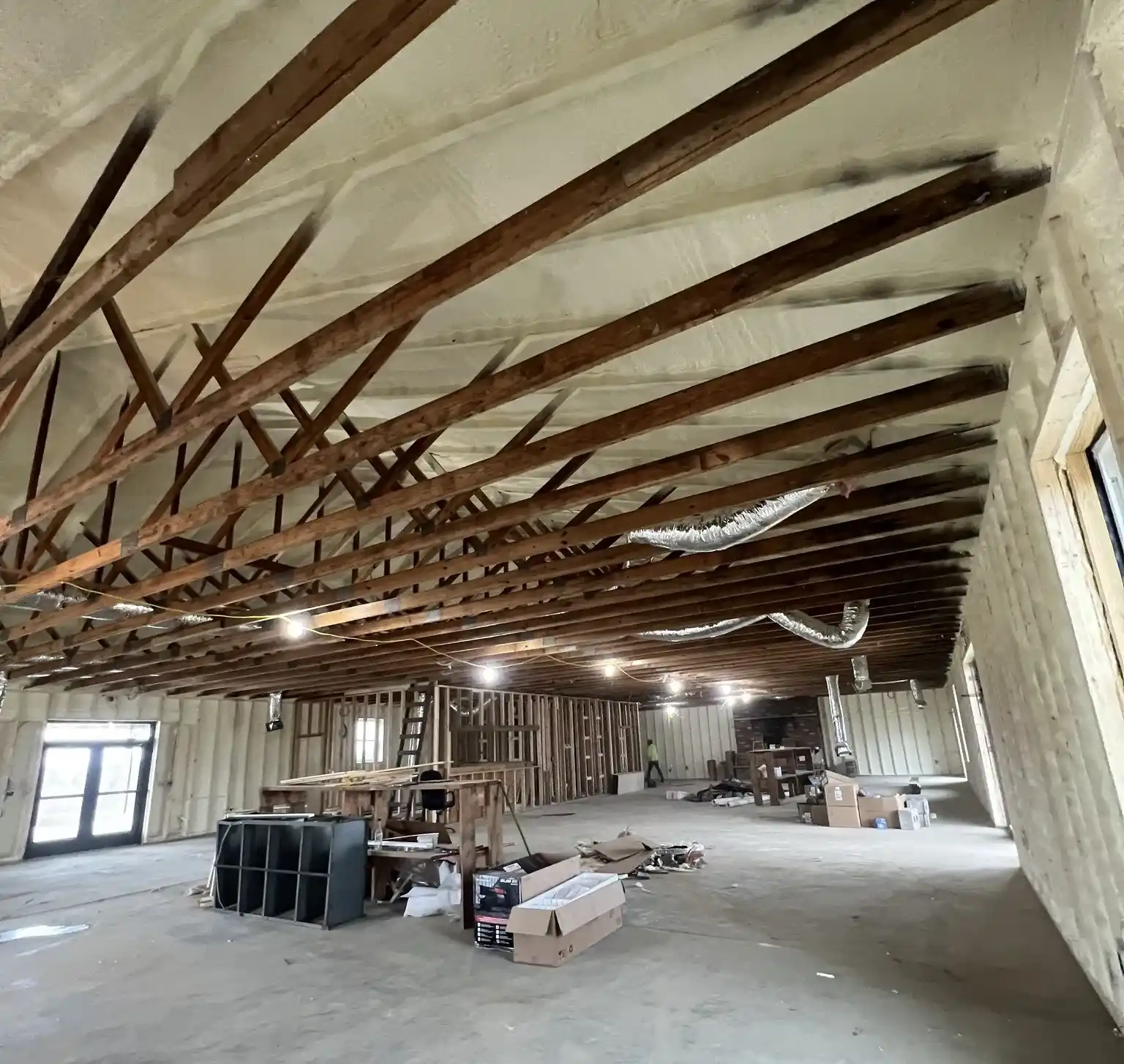
Commercial insulation for energy efficiency plays a vital role in enhancing energy performance by reducing heat transfer, maintaining stable indoor temperatures, and lowering dependence on HVAC systems. In large buildings, inadequate insulation leads to significant energy loss through walls, ceilings, and roofs—causing utility costs to rise and HVAC systems to work harder. By minimizing thermal bridging and strengthening the building envelope, proper insulation delivers measurable and lasting energy savings.
The upfront investment in insulation for commercial properties pays off over time through lower operating costs, improved occupant comfort, and longer system life cycles. This article offers a practical breakdown of insulation types, performance data, regional insights, and considerations for making informed decisions based on Ohio Valley Spray Foam’s field experience.
Insulation slows the transfer of heat through a building’s envelope. In summer, it keeps conditioned air in; in winter, it holds heat inside. This helps HVAC systems work more efficiently, reducing energy demand.
According to the U.S. Department of Energy, commercial buildings account for roughly 35% of total building energy consumption in the U.S. (DOE, 2024). Insulation upgrades can reduce heating and cooling costs by up to 40% (EPA Energy Star, 2023).
Modern energy codes (ASHRAE 90.1) set minimum R-values for insulation. Non-compliance increases operational costs and can lead to legal penalties during inspections or resale.
| Type of Insulation | R-Value per Inch | Air Seal Capability | Moisture Resistance | Application Areas | Lifespan |
|---|---|---|---|---|---|
| Closed-Cell Spray Foam | 6.0–7.0 | Excellent | High | Walls, Roof Decks | 30–50 years |
| Open-Cell Spray Foam | 3.5–3.8 | Moderate | Low | Interior Walls, Ceilings | 20–30 years |
| Blown-in Fiberglass | 2.2–2.7 | Poor | Low | Attics, Floor Cavities | 15–30 years |
| Performance Metric | Closed-Cell Spray Foam | Open-Cell Spray Foam | Blown-in Fiberglass |
|---|---|---|---|
| Air Infiltration Control | 98%+ | 70%+ | <30% |
| Water Vapor Permeability (perm) | <1.0 | 10+ | 20+ |
| Compressive Strength (psi) | 25–30 | <5 | Not rated |
| Ideal Installation Temperature | 40–120°F | 60–120°F | 40–90°F |
Bonus Tip: For retrofits, infrared scanning helps identify air leakage and prioritize insulation upgrades without damaging existing structures.

Bonus Tip: Coordinate insulation plans with HVAC system upgrades to avoid over-sizing or under-sizing based on outdated building performance data.
Closed-cell spray foam provides superior coverage and thermal resistance for wide-span areas like gyms, warehouses, and auditoriums.
Yes. Spray foam can adhere to many surfaces, but proper surface prep is essential for long-term adhesion.
Project timelines depend on square footage and existing conditions. On average, a 10,000 sq. ft. facility takes 3–5 days.
Insulation typically requires no maintenance unless damaged by water intrusion or mechanical impact.
For technical guidance or to schedule a site assessment, contact:
Ohio Valley Spray Foam Phone: (740) 373-3626 Email: [email protected]
Accurate insulation choices improve efficiency, reduce costs, and align with long-term operational goals. Ohio Valley Spray Foam brings field-tested knowledge to every project, supporting better performance from day one.
By maintaining consistent indoor temperatures, insulation reduces the frequency and intensity of HVAC cycling, extending system lifespan.
Properly installed spray foam reduces air leaks, lowering the infiltration of allergens and pollutants.
Some states and utility companies offer rebates for commercial energy efficiency upgrades. Check with your local energy provider.
Yes. Open-cell spray foam is especially effective in absorbing sound between interior walls.
Fire safety, adhesion integrity, and R-value verification are common inspection points for commercial installations.